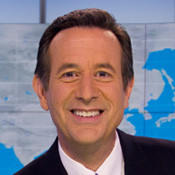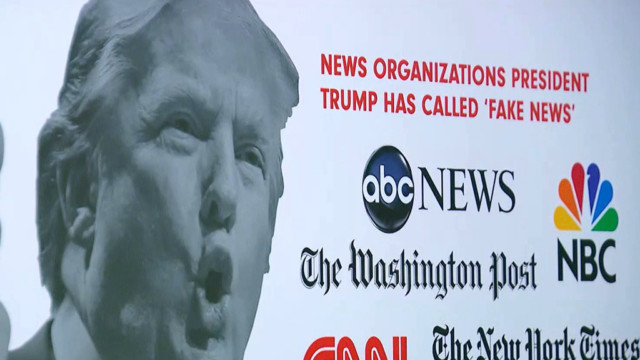Rocket Man, Stable Genius, Fake News–those phrases immediately conjure up images of Donald Trump’s tweets. The short bursts of text provide insight into Trump’s thinking.
But they’ve also confounded journalists trying to cover the first year of an unconventional President. CGTN’s Mike Walter takes a look.
After the U.S. Presidential Inauguration it wasn’t long before the world was treated to a torrent of Trump tweets.
“People say he’s so outrageous,” said Clark Judge, a speechwriter to former U.S. President Ronald Reagan. “Well, watch what happens when he gets outrageous–that becomes the story. What he clearly wants to do is not give up the agenda setting to others. He wants to set the agenda himself.”
Judge’s boss, Ronald Reagan, was the 40th President of the United States. Judge said back in the 1980’s, the Washington Post and the New York Times set the agenda, and the White House had to respond. But that’s not the way it is anymore.
“(Trump) uses Twitter to drive,” said Judge. “Tto drive radio, to drive the newspapers, to drive all of the old technologies and they in turn magnify him.”
Margaret Engel was a reporter for the Post when Reagan was in office. She says the Post and the New York Times still set the agenda for the most part, but she admits covering the tweets presents challenges.
“You have to be alert to those 3 a.m. tweets that we’re getting,” said Engel. “You have to respond to it, but the exhaustion level is enormous for journalists today, because nowhere has there been a time where you have to be on red alert 24/7. Now that is the case.”
Gene Policinski was one of the founding editors of USA TODAY. Today, he’s President and CEO of the Newseum Institute. He recognizes a new chapter in journalism history is being written because of Trump tweets. U.S. President Franklin Roosevelt took his agenda directly to the public in so-called “fireside chats” on the radio. Policinski said Trump is doing the same thing on Twitter.
“He’s very effective, but I joke its ‘fireside tweets’ instead of ‘fireside chats’ you know,” Policinski said.
Gene sees Trump doing exactly what past presidents have done, like John F Kennedy. That is–taking the technology of the time and using it to their advantage to bypass traditional media and go straight to the people.
“John Kennedy was a very telegenic man,” Policinski pointed out. “He would seize control of the media, so to speak, by having live televised news conferences. He was very good at it. He was a witty, handsome guy. (Kennedy’s staff) seized the medium of television, which was still relatively new in 1960-1961.”
But there are obvious differences.
“It’s interesting, because the tweet that might be controversial, sensational or dramatic probably does crowd out a significant story, because news organizations have limited resources, limited time, and the public has a limited attention span,” Policinski added.
And that concerns Margret Engel who is now Executive Director at the Alicia Patterson Foundation which funds investigative journalists’ passion projects, the very projects that might get squeezed by a dramatic Presidential tweet.
“I’m really encouraged that the press is starting to move beyond that,” said Engel. “Even though they are having to deal with these twitter storms, they’re starting to give more weight to the stories that really make a difference in people’s lives.”
While the tweets are garnering attention now, analysts aren’t sure they’ll mean much when viewed through history.
“I think twitter will be a footnote,” said Judge. “The real question of the Trump presidency will be written by his achievements.”
“I think we need to tell ourselves we are in the middle of something,” said Policinski. “So it’s hard to either look back or look forward because we are right in the middle of it. It’s like a storm.”
A twitter storm, and the next one may be forming as we speak.
 CGTN America
CGTN America

